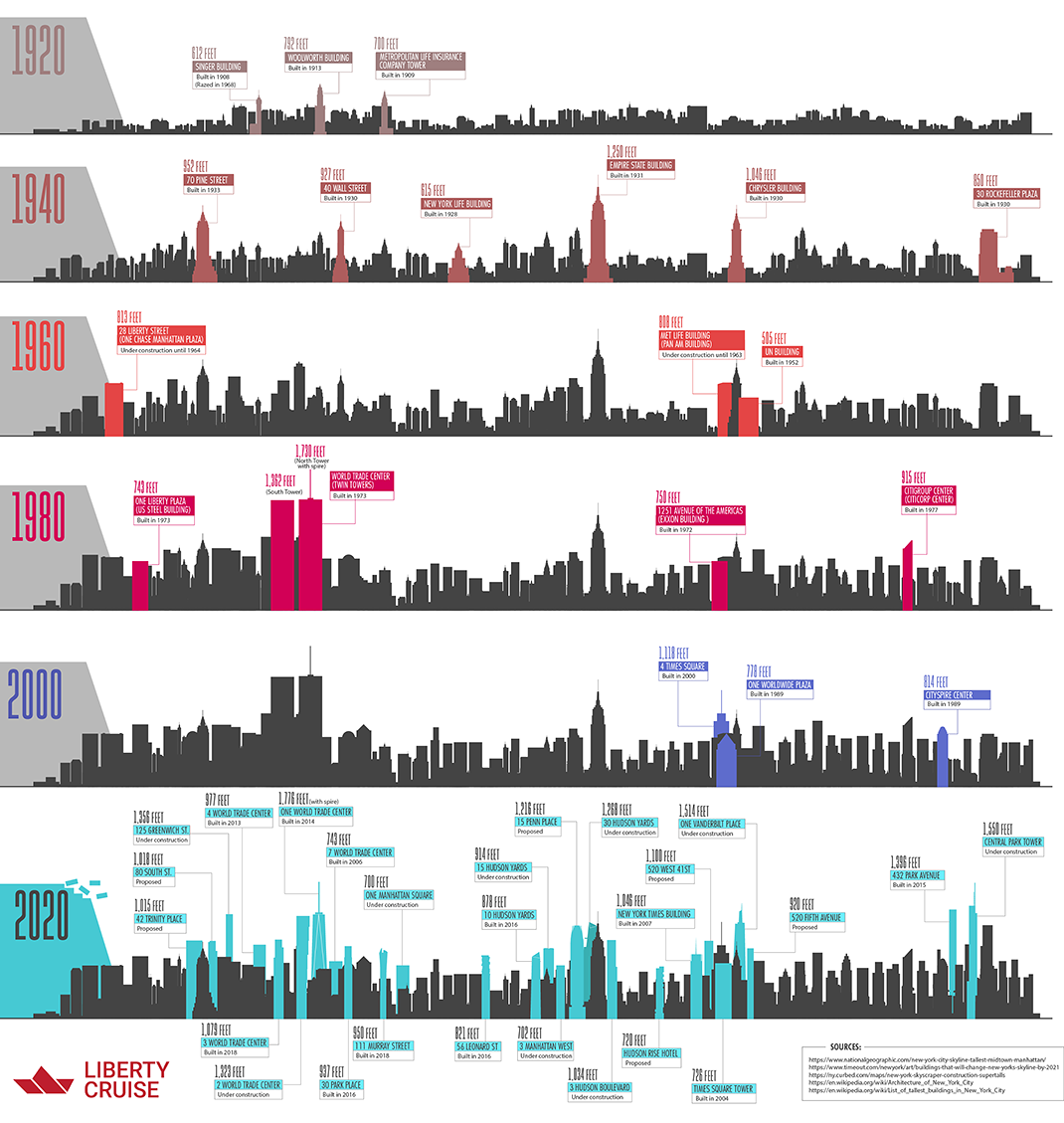Over New York City’s storied history, the skyline has evolved constantly.
Smoke stacks and cathedral spires were gradually eclipsed by the stately office towers of “Newspaper Row”, and, as Visual Capitalist’s Nick Routley writes, iconic skyscrapers like the Chrysler Building soon shared the skyline with monolithic towers in the international style.
Today’s infographic comes to us from Liberty Cruise NYC and it charts this evolution over the last century, while highlighting just how dramatically the cityscape is set to change by 2020.
Courtesy of: Visual Capitalist
THE EARLY HISTORY OF SKYSCRAPERS
For decades, the ornate spire of Trinity Church towered over Lower Manhattan. It wasn’t until the late-1800s when technology and economic might converged to produce the first modern towers.
The city’s first cluster of tall buildings appeared around City Hall, as newspapers competed to see who could build the most grand headquarters. One of the more ambitious projects in this wave of development was the New York World Building (1890), which held the title as the tallest skyscraper in the world.
In 1908, the ante was upped further after the completion of the 47-storey headquarters of the Singer Sewing Machine Company and the 50-storey Metropolitan Life Tower. NYC was slower than its rival, Chicago, in adopting skeleton-frame construction techniques, but once that door was open, height records were eclipsed every few years.
FROM ’20S TO ZERO
The roaring ’20s ushered in a new age of skyscrapers in New York City that only picked up steam heading into the 1930s. Not only was the economy booming, but the United States had recently became one of the first countries in the world to have a majority-urban population. Manhattan was a magnet for growth, and its extreme population density left only one direction to grow: skyward.
A number of iconic landmarks were constructed in this era, including the Empire State and Chrysler Buildings.
As the chart above clearly illustrates, the onset of the Great Depression had a pronounced cooling effect on construction in New York City. For more than a decade, no new 150m+ towers were added to the city’s skyline.
NEW YORK TODAY
The world has changed a lot since the ribbon was cut in front of the Empire State Building. Flagship skyscrapers have grown taller than we ever could’ve imagined, and relentless development has completely transformed places like Dubai and Shenzhen. Even so, New York City is still home to more 100m+ buildings than any other city on Earth.
It’s also worth mentioning that New York City found itself back in the top 10 tallest buildings list after the completion of One World Trade Center in 2014.
WHAT THE FUTURE HOLDS
New York City’s skyline is packed with recognizable towers, but for a long time, few new projects challenged the vertical supremacy of buildings like MetLife or Empire State. Today – thanks to engineering innovations and acquisition of “air rights” on neighboring plots – the skyline is undergoing a dramatic transformation.
Powered by a healthy ultra-high-end real estate market, slender skyscrapers are rising above the skyline.
This style of building uses a small land footprint so effectively, that projects are springing up around the city. According to Skyscraper Center, there are 86 skyscrapers under construction or planned, with 10 projects set to surpass the height of the Chrysler Building.
While this level of construction is dwarfed by activity in fast-growing metropolises in China, this new generation of high-visibility towers is a sign that the Big Apple is still a strong draw for the world’s ultra-wealthy.
The post Visualizing A Century Of New York City’s Evolving Skyline appeared first on crude-oil.news.




